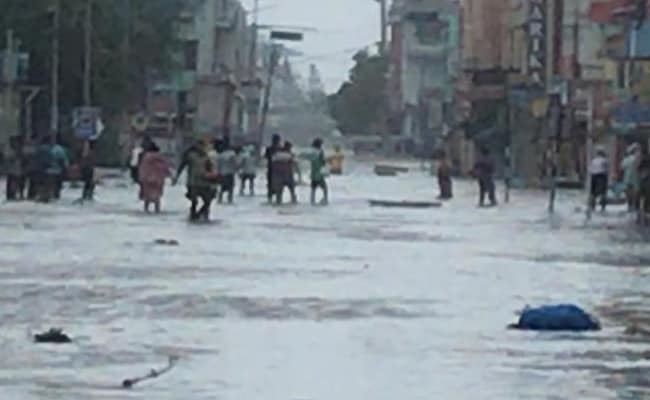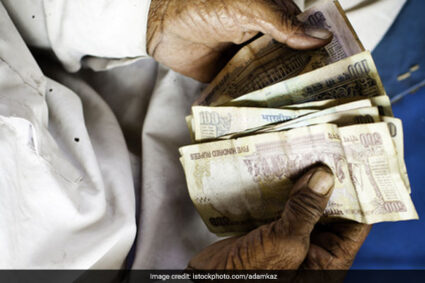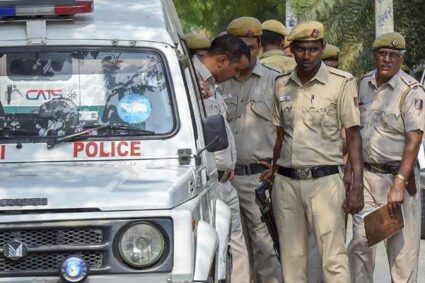

Cyclone Yaas is the second to hit India this month – after Cyclone Tauktae hit Gujarat last week
Highlights
- Odisha’s Bhadrak, Balasore districts are likely to be most badly affected
- Visuals from Bengal showed people wading through knee-deep water
- Around 5.8 lakh people shifted from low-lying regions in Odisha
New Delhi: Cyclone Yaas crossed the north Odisha coast about 20 km south of Balasore between 10.30 and 11.30 am, with 130-140 km per hour winds and 150 km per hour gusts. At 1.30 pm it was over north coastal Odisha, about 15 km southwest of Balasore.
Here are the top 10 points in this big story:
-
Cyclone Yaas has weakened into a ‘severe cyclonic storm’ with 100-110 km per hour winds and 120 km per hour gusts. At 1.30 pm it was 15 km from Balasore and centred over north coastal Odisha. It is expected to weaken further – into a ‘cyclonic storm’ – over the next six hours, moving north-northwest towards Jharkhand as it does.
-
Although landfall has been completed, heavy rains are still predicted and fishermen have been advised not to venture out to sea. Jharkhand is on on high alert and officials have begun evacuating people from low-lying areas in vulnerable districts like East and West Singhbhum. Odisha also remains on high alert.
-
Worst-affected districts in Odisha on Wednesday were Balasore, Bhadrak, Jagatsinghpur and Kendrapara. In Bengal, South and North 24 Paraganas, Digha, East Medinipur and Nandigram were among the worst-hit. Thirteen low-lying parts of Kolkata were flooded.
-
Bengal Chief Minister Mamata Banerjee said one person died in Digha town – he was reportedly dragged out to sea when he tried to catch fish. The coastal town was “swamped” by waves the height of a double-decker bus, news agency AFP said. Two others were electrocuted Tuesday, news agency ANI reported.
-
Ms Banerjee said over 15 lakh people had been evacuated, three lakh houses damaged and 134 embankments destroyed. High tide in rivers had worsened the impact and an estimated one crore people had been affected, she said. The state has allotted relief material worth Rs 10 crore, the Chief Minister added. Villagers have been cautioned against going home, with weather reports still predicting strong wind and heavy rain.
-
Bengal suffered extensive damage to agricultural land (due to ingress of salt water), fishery, animal husbandry and horticulture facilities. Around 20,000 mud houses and temporary shelters were either destroyed or damaged, news agency Reuters said. Minister Bankim Hazra said: “I have not seen anything like this before” after sea waters inundated low-lying areas in Digha, where a police station was flooded.
-
There has been no major damage reported from Odisha so far, although trees have been uprooted in Bhadrak district and some areas have been flooded. The government has warned people that heavy rains may continue and has urged them to stay indoors. Around 5.8 lakh people were shifted from low-lying regions in Odisha.
-
Kolkata’s Netaji Subhash Chandra Bose International Airport is closed till 7.45 pm. Bhubaneswar’s Biju Patnaik International Airport is closed till 5 am Thursday. Veer Surendra Sai Airport in Odisha’s Jharsuguda is shut till 7.45 pm Thursday. Durgapur and Rourkela airports will stay closed today. Indian Railways has cancelled, till Saturday, 38 long-distance passenger trains headed to both Kolkata and southern states.
-
Naval base INS Chilka is co-ordinating relief efforts with operations supported by Eastern Naval Command Headquarters in Visakhapatnam. The Army has deployed 17 columns in Bengal. Three columns and an engineering force have been sent to Odisha. The Air Force’s Eastern Command, which is based in Meghalaya, has also moved to help.
-
Yaas, like Tauktae, strikes as India battles a devastating second wave of Covid infections. Officials fear the storm will complicate efforts to halt the surge in cases. Masks are being distributed at emergency shelters but maintaining social distancing will be a challenge. Vaccination drives in affected areas have also been suspended.
With input from AFP, ANI, PTI, Reuters






